Discover Whitetail Landscapes - Hunting & Habitat Management
Whitetail Landscapes - Hunting & Habitat Management

Whitetail Landscapes - Hunting & Habitat Management
Author: Sportsmen's Empire
Subscribed: 170Played: 3,748Subscribe
Share
© 2022 Sportsmen's Empire
Description
Whitetail Landscapes focuses on enhancing whitetail deer hunting properties through design and management efforts. Jon Teater owns and operates Whitetail Landscapes and has established clients throughout the United States. Jon’s experience combined with reoccurring podcast guests will provide opportunities for those around the country to learn how to improve their hunting property.
214 Episodes
Reverse
In this episode of Maximize Your Hunt, Jon Teater discusses various strategies for hunting success, including the use of e-bikes for efficient property management and scouting. The conversation with Dieter Kochan (FaceOff Ebikes) highlights the importance of adapting to changing conditions, learning from past hunting experiences, and understanding deer behavior during the rut. Teater emphasizes the need for continuous scouting and adjusting strategies based on fresh signs and environmental factors. takeawaysThe podcast focuses on maximizing hunting property through land management and habitat improvement.E-bikes can enhance scouting efficiency and reduce noise, making them a valuable tool for hunters.Scouting fresh signs is crucial for hunting success, especially during the rut.Hunters should be adaptable and willing to change strategies based on conditions and deer behavior.Understanding crop rotations can impact hunting strategies and deer movement.It's important to recognize and utilize overlooked areas that may be prime hunting spots.Trail cameras should be strategically placed to gather information during the rut.Hunters need to be aware of their surroundings and the deer’s natural tendencies.Investing in quality equipment, like e-bikes, can lead to better hunting experiences.Continuous learning and adapting from past experiences is key to improving hunting success. Social Linkshttps://www.faceoffebikes.com/https://www.instagram.com/rangermatthews/https://whitetaillandscapes.com/https://www.facebook.com/whitetaillandscapes/https://www.instagram.com/whitetail_landscapes/?hl=en Hosted by Simplecast, an AdsWizz company. See pcm.adswizz.com for information about our collection and use of personal data for advertising.
In this episode of Maximize Your Hunt, host Jon Teater reflects on his journey in podcasting and hunting, sharing insights on land management, hunting strategies, and the importance of community engagement among hunters. He discusses his personal hunting experiences, tactics for success, and the significance of building a cooperative hunting community to enhance deer management and hunting success. Thomas Mlsna (Untamed Ambition) discusses his hunting tactics, breaking down deer movement, and how to influence his community for better overall deer quality. takeawaysThe podcast focuses on maximizing hunting properties.Jon reflects on his growth in podcasting and hunting.Community engagement is crucial for successful hunting.Scouting and hunting from the outside in is effective.Building relationships with neighbors can improve hunting success.Communication creates common goals among hunters.Fear tactics are ineffective in encouraging better hunting practices.Hunting serves as a valuable management tool for wildlife.Creating opportunities requires collaboration with the community.Success in hunting is a marathon, not a sprint. SocialSocial Linkshttps://whitetaillandscapes.com/https://www.facebook.com/whitetaillandscapes/https://www.instagram.com/whitetail_landscapes/?hl=enhttps://www.theuntamedambition.com/https://www.theuntamedambition.com/whitetailambition Hosted by Simplecast, an AdsWizz company. See pcm.adswizz.com for information about our collection and use of personal data for advertising.
In this episode of Maximize Your Hunt Jon Teater and guest Eric Hansen (just hunt club) discuss various hunting strategies, focusing on deer behavior, food sources, and effective hunting setups. They explore the importance of managing deer populations, the significance of food plots, and the impact of hunting pressure in different areas. The conversation also delves into personal reflections on hunting success and the responsibilities of hunters in maintaining healthy deer populations.Takeaways:The importance of executing a well-planned hunting strategy.Understanding deer behavior is crucial for successful hunting.Food sources significantly influence deer movement and hunting tactics.Hunting setups should be adapted based on environmental conditions.Effective use of blinds can enhance hunting success.Creating and maintaining food plots is essential for attracting deer.Scrape setups can be a game-changer for deer attraction.Hunting pressure varies by location and affects deer survival rates.Personal enjoyment and responsibility in hunting are key to a fulfilling experience.Calculated risks can lead to greater hunting success.Social Links:https://whitetaillandscapes.com/https://www.facebook.com/whitetaillandscapes/https://www.instagram.com/whitetail_landscapes/?hl=enhttps://www.justhuntclub.com/https://www.youtube.com/c/justhuntclubhttps://www.facebook.com/justhuntclub/ Hosted by Simplecast, an AdsWizz company. See pcm.adswizz.com for information about our collection and use of personal data for advertising.
In this conversation, Jon Teater discusses various hunting strategies, the importance of woodsmanship, and the role of technology in modern hunting. Joined by Greg Litzinger (Bowhunting Fiend), they explore the nuances of deer movement, the effectiveness of cameras, and the significance of understanding the land. The conversation emphasizes the need for adaptability, instinctual decision-making, and the balance between technology and traditional hunting skills. Takeaways:Maximizing your hunting property requires a comprehensive approach.Consulting with agronomists can enhance land management strategies.Experience in diverse hunting environments provides valuable insights.Cameras can sometimes mislead hunters about deer movement.Woodsmanship is crucial for successful hunting outcomes.Trusting your instincts can lead to better hunting decisions.Understanding deer movement patterns is essential for success.Reading the land helps identify ideal hunting spots.Mobility in hunting is key to adapting to changing conditions.A good mindset and approach can enhance the hunting experience. Social Linkshttps://www.instagram.com/bowhunting_fiend/?hl=enhttps://www.youtube.com/watch?v=9-RMHGxtq-0https://whitetaillandscapes.com/https://www.facebook.com/whitetaillandscapes/ Hosted by Simplecast, an AdsWizz company. See pcm.adswizz.com for information about our collection and use of personal data for advertising.
In this episode of Maximize Your Hunt, host Jon Teater (Whitetail Landscapes) discusses effective strategies for maximizing hunting success, focusing on whitetail deer. He emphasizes the importance of preparation, understanding deer behavior, and adapting to environmental changes. Steve Sherk (Sherk’s Guide Service) conversation covers early season tactics, the significance of bedding areas, and the impact of weather on deer movement. Additionally, they discuss the importance of conservation and managing deer populations for sustainable hunting practices.takeawaysMaximizing your hunting property requires strategic planning.Preparation for the hunting season includes gear and scouting.Drought conditions can significantly alter deer behavior and movement.Identifying water sources is crucial for hunting success this season.Deer tend to concentrate in specific areas due to environmental factors.Understanding bedding areas is key to early season hunting success.Temperature and weather changes greatly affect deer movement patterns.Evening hunts are often more productive than morning hunts in the early season.Conservation efforts are essential for maintaining healthy deer populations.Pay attention to small changes in the landscape for better hunting opportunities. Social LinksSherk's Guide Service – Guided Deer Hunts (sherksguideservice.com)Sherk's Guide Service - Home | FacebookSteve Sherk Jr. (@sherksguideservice) • Instagram photos and videoshttps://whitetaillandscapes.com/https://www.facebook.com/whitetaillandscapes/https://www.instagram.com/whitetail_landscapes/?hl=en Hosted by Simplecast, an AdsWizz company. See pcm.adswizz.com for information about our collection and use of personal data for advertising.
In this episode of Maximize Your Hunt, host Jon Teater (Whitetail Landscapes) discusses effective hunting strategies, particularly focusing on early season deer behavior and the importance of understanding local conditions. He shares insights from a successful client, Jon Audet, who navigated challenging weather to harvest a mature buck. The conversation also delves into innovative land management techniques, including water capture strategies, and emphasizes the significance of a strategic mindset in hunting. Listeners are encouraged to adapt their approaches based on environmental factors and to appreciate the rewards of diligent land management. takeawaysHunting strategies should adapt to local deer behavior and environmental conditions.Understanding the social dynamics of deer can enhance hunting success.Weather challenges can significantly impact crop establishment and deer movement.Innovative water management techniques can improve land productivity during droughts.Diversity in food plots can attract deer even in adverse conditions.Harvesting a target buck requires strategic planning and preparation.Maintaining a tactical mindset is crucial for successful hunting.Client success stories can provide motivation and insights for other hunters.Effective land management can lead to better hunting outcomes over time.Continuous learning and adaptation are key to maximizing hunting success. Social Linkshttps://whitetaillandscapes.com/https://www.facebook.com/whitetaillandscapes/https://www.instagram.com/whitetail_landscapes/?hl=enhttps://www.instagram.com/thewhitetailproject/?hl=en Hosted by Simplecast, an AdsWizz company. See pcm.adswizz.com for information about our collection and use of personal data for advertising.
In this episode of Maximize Your Hunt, host Jon Teater (Whitetail Landscapes) discusses various strategies and insights for successful deer hunting with expert Ty Jennings. They cover early season preparation, understanding deer behavior, effective observation techniques, and the importance of mindset and gear. The conversation emphasizes the need for adaptability in changing conditions and the significance of being intentional in hunting practices. Both speakers share personal experiences and insights on what defines success in hunting, highlighting the balance between the journey and the goal of harvesting a deer.takeawaysThe podcast focuses on maximizing hunting property through land management and strategies.Early season preparation is crucial for successful hunting.Understanding deer behavior and movement patterns is essential for effective hunting.Observation techniques can significantly increase hunting success.Adapting to changes in hunting conditions is necessary for success.A strong mindset and tactical approach are vital for effective hunting.Choosing the right gear can enhance stealth and movement in the field.Defining success in hunting varies from person to person, focusing on personal goals.Balancing the challenges of hunting with the enjoyment of the process is important.Continuous learning and adapting strategies based on experiences lead to better outcomes. Social Linkshttps://whitetaillandscapes.com/https://www.facebook.com/whitetaillandscapes/https://www.instagram.com/whitetail_landscapes/?hl=enhttps://www.instagram.com/thewhitetailproject/?hl=en Hosted by Simplecast, an AdsWizz company. See pcm.adswizz.com for information about our collection and use of personal data for advertising.
In this episode of Maximize Your Hunt, host Jon Teater (Whitetail Landscapes) discusses strategies for maximizing hunting success through effective land management and habitat improvement. He shares insights on deer behavior, the importance of soil and water management, and the need for biodiversity in ecosystems. The conversation emphasizes the significance of understanding the dynamics of the landscape and creating productive environments for wildlife.takeawaysDeer behavior is influenced by environmental conditions and hunting culture.Understanding the pecking order among deer can aid in hunting strategies.Quality management of deer populations involves monitoring age classes and ratios.Designing landscapes for hunting requires a holistic approach to ecology.Soil health and water management are critical for productive habitats.Biodiversity enhances ecosystem resilience and supports wildlife.Natural methods of land management can yield better results than chemical interventions.Creating organized chaos in landscapes can benefit wildlife habitats.Simpler management systems can be more effective than complex monocultures.Engaging with the community and sharing knowledge can enhance hunting success. Social Linkshttps://whitetaillandscapes.com/https://www.facebook.com/whitetaillandscapes/https://www.instagram.com/whitetail_landscapes/?hl=en Hosted by Simplecast, an AdsWizz company. See pcm.adswizz.com for information about our collection and use of personal data for advertising.
In this episode of Maximize Your Hunt, host Jon Teater (Whitetail Landscapes) and Albert Tomechko (Vitalize Seed) discuss various strategies for optimizing hunting properties through effective land management and habitat improvement. The conversation covers designing frameworks for hunting, late-season planting strategies, enhancing germination techniques, and the importance of cold hardiness in plants. Additionally, the episode delves into the significance of foliar applications for plant health and the integration of soil health and nutrition in achieving optimal growth. The episode concludes with a discussion on seed selection tailored to specific soil types, emphasizing the need for diversity in planting to mitigate risks and enhance resilience. takeawaysThe podcast focuses on maximizing hunting properties through land management.Designing effective hunting frameworks requires a deep understanding of environmental complexities.Diversity in planting strategies can significantly mitigate risks associated with crop failure.Cold hardiness is essential for ensuring plant survival during harsh winter conditions.Foliar applications can enhance nutrient uptake and overall plant health.Soil health is a critical factor in successful planting and crop yield.Germination techniques play a vital role in the success of food plots.Understanding soil chemistry is crucial for effective land management.Selecting the right seeds based on soil type can optimize growth and resilience.Integrating various planting strategies can lead to more productive hunting environments. Social Linkshttps://whitetaillandscapes.com/https://www.facebook.com/whitetaillandscapes/https://www.instagram.com/whitetail_landscapes/?hl=enHome | Vitalize Seed Company Hosted by Simplecast, an AdsWizz company. See pcm.adswizz.com for information about our collection and use of personal data for advertising.
In this episode of Maximize Your Hunt, host Jon Teater (Whitetail Landscapes) discusses various strategies for managing hunting properties, improving habitats, and understanding deer behavior. He emphasizes the importance of acclimating deer to human activity, creating effective flow movement, and utilizing trail cameras strategically. The conversation with Colin Koskinen (Legendary Habitat) covers the significance of layering cover and creating hubs for deer movement, as well as tips for concealing trail cameras to minimize disturbance. As the hunting season approaches, Jon Teater encourages listeners to be patient and make positive impacts on their properties to enhance deer activity.TakeawaysMaximizing your hunting property requires active management.Deer can acclimate to human activity if managed properly.Food plots can be beneficial if done correctly.Flow movement is essential for deer behavior.Creating hubs can enhance deer movement and activity.Trail cameras should be integrated into the landscape.Concealment of cameras is crucial for accurate data.Layering cover can improve deer bedding areas.Do not rely solely on camera data; observe the field.Every action taken on the property should be a positive impact. Social Linkshttps://whitetaillandscapes.com/https://www.facebook.com/whitetaillandscapes/https://www.legendaryhabitat.com/https://www.youtube.com/channel/UCbIsv6Orm9cD025IBFx8DWAhttps://podcasts.apple.com/us/podcast/legendary-habitat-podcast/id1613808320https://www.facebook.com/LegendaryHabitat/ Hosted by Simplecast, an AdsWizz company. See pcm.adswizz.com for information about our collection and use of personal data for advertising.
This episode of 'Maximize Your Hunt' features a discussion on the importance of wetlands in hunting properties, focusing on their role in deer habitat and waterfowl management. Jon Teater (Whitetail Landscapes) and Eric Lance (Hunt Science) focus their conversation on food plot management, soil remediation, and the significance of plant selection for maintaining water quality and biodiversity. The speakers emphasize the need for careful planning and management of wetland areas, including the challenges posed by invasive species and the benefits of controlled burning. The episode concludes with encouragement for listeners to engage with local conservation agencies to enhance their wetland areas.Takeaways:Wetlands provide essential habitat for both deer and waterfowl.Food plots should be managed with attention to soil health and plant diversity.Emergent species in wetlands can serve as forage for deer.Water quality is critical for the health of wetland ecosystems.Invasive species management is a key aspect of wetland maintenance.Controlled burning can help reset plant communities and promote growth.Hunting pressure can negatively impact wildlife populations.Engaging with local conservation agencies can provide valuable resources.Diversity in plant life enhances habitat quality for wildlife.Wetland restoration is a worthwhile investment for landowners. Social Linkshttps://whitetaillandscapes.com/https://www.facebook.com/whitetaillandscapes/https://www.instagram.com/whitetail_landscapes/?hl=enhttps://podcasts.apple.com/us/podcast/the-huntscience-podcast/id1646115040https://www.instagram.com/huntscience_podcast/ Hosted by Simplecast, an AdsWizz company. See pcm.adswizz.com for information about our collection and use of personal data for advertising.
In this episode of 'Maximize Your Hunt', host Jon Teater (Whitetail Landscapes) and guest Jaden Bjorklund (Northland Habitat), discuss habitat and timber management, and government programs related to trees and overall management strategies to improve hunting properties. This podcast episode explores various aspects of land management, focusing on habitat improvement, tree diseases like oak wilt, and effective tree planting strategies. The conversation emphasizes the importance of community building among landowners, the role of forest health specialists, and the need for diversity in tree species to enhance forest ecosystems. Listeners will gain insights into practical management techniques, including grafting and creating tree nurseries, as well as understanding the economic aspects of tree planting.TakeawaysMaximize Your Hunt focuses on habitat management for hunting properties.Using fire as a weeding method can be effective but time-consuming.Oak wilt is a significant concern for forest health.Red oaks are more susceptible to oak wilt than other species.Fungicide injections can help save affected trees if caught early.Community building is essential for sharing knowledge in land management.Diversity in tree species can enhance forest resilience.Planting trees should be done in manageable quantities.Creating a tree nursery can be a cost-effective strategy.Cost share funding is available for tree planting initiatives.Social Linkshttps://whitetaillandscapes.com/https://www.facebook.com/whitetaillandscapes/https://www.instagram.com/whitetail_landscapes/?hl=enhttps://northlandhabitat.com/https://www.instagram.com/northland.habitat/ Hosted by Simplecast, an AdsWizz company. See pcm.adswizz.com for information about our collection and use of personal data for advertising.
In this episode of 'Maximize Your Hunt', host Jon Teater (Whitetail Landscapes) discusses the importance of effective land management and habitat improvement for hunting properties. He emphasizes the design philosophy of fit, form, and function, and the critical role of water management in maintaining healthy landscapes, especially during droughts. John shares personal experiences connecting with nature and the significance of hedgerows in providing wildlife corridors and supporting biodiversity. He offers insights into selecting plants for hedgerows and the long-term planning necessary for sustainable landscapes.TakeawaysHaving a plan of action is crucial for property management.Fit, form, and function are key design principles.Water management systems are essential for drought resilience.Connecting with nature enhances the hunting experience.Hedgerows serve as vital travel corridors for wildlife.Diversity in plant selection promotes a healthier ecosystem.Long-term planning is necessary for sustainable landscapes.Engaging with your environment can lead to better outcomes.Designing hedgerows requires understanding animal behavior.Patience and time investment yield better property management results. Social Linkshttps://whitetaillandscapes.com/https://www.facebook.com/whitetaillandscapes/https://www.instagram.com/whitetail_landscapes/?hl=en Hosted by Simplecast, an AdsWizz company. See pcm.adswizz.com for information about our collection and use of personal data for advertising.
FROM THE VAULT: In this episode, Jon Teater (Whitetail Landscapes) and Jake Ehlinger (Habitat Solutions 360) discuss food plots, property management, design, maintenance, and new property layout techniques. Jake explains his no till, food source options and how to reshape your property based on the neighborhood. Jake discusses his neighborhood and how to approach changes on a yearly basis. Jake's adaptive management style and his ability to be consistent and grow more tonnage per acre, allows him to pull in more deer and be less susceptible to over browse.Jake discusses his current food plot regime, and breaks down why this is the better late season food plot option when trying to manage a larger deer herd. Jake details his property layout and how deer congregate on his property when he creates “green plots” and how his food plots will outcompete other options like soybeans. Jake discusses a combination of soybeans and corn and what ratio he plants each in to get maximum results. Jake provides an option for annual plants and other options you have for late season food.Jake explains his neighborhood situation and what his neighbors are doing from a harvest to food perspective and how this impacts his property. Jake discusses the importance of his observation treestand and how you can observe much more through your own eyes as compared to trail cameras. Jake explains how trail systems he lays out will lead deer through his property for better hunting opportunities. Jon discusses the importance of observation data and why we should not ignore this information when evaluating deer movement. Jake explains his observation data and how bucks use cover and how deer move based on densities and wind direction. Jake explains how deer can avoid trail cameras and sometimes our reliance on trail cameras can be fraught with lack of or misinformation. Jon and Jake discuss how deer are individualistic and how data from trail cameras and observation lead to more information on deer behavior. Jon explains a strategy to pull a mature buck onto your property and the bits of information he relies on to ensure deer are going have increased interest in a property. Jake discusses changes over time and how he handles the maintenance and improvement side of his property as succession occurs. Jon explains what we need to consider as we are making changes on our property as we go through seral stages over time. Jake explains a recent change he has made to his property to ensure deer utilization is high. Jake discusses normal maintenance and specific changes that may be needed to ensure bedding areas remain permanent fixtures in a deer’s movement. Jake explains how to cut a focal area on his property through creating walls of cover, travel corridors, open and closed areas in the best locations. Jake continues to improve his and his client’s properties through these detailed methods of cutting and how he emphasizes diversity on the landscape.Check out the Sportsmen's Empire Podcast Network for more relevant, outdoor content!Social Linkshttp://habitatsolutions360.com/https://www.facebook.com/HabitatSolutions360https://www.youtube.com/channel/UCetSptPTK0gmg0BE5oRnTTAhttps://whitetaillandscapes.com/https://www.facebook.com/whitetaillandscapes/https://www.instagram.com/whitetail_landscapes/?hl=en Hosted by Simplecast, an AdsWizz company. See pcm.adswizz.com for information about our collection and use of personal data for advertising.
In this episode of 'Maximize Your Hunt', host Jon Teater (Whitetail Landscapes) and Jake Blow (Habitat Pro) discuss effective strategies for land management and habitat improvement to enhance deer hunting experiences. They delve into the importance of managing predators, the strategic placement of water sources like ponds, and the construction of berms to improve deer movement and hunting success. The conversation emphasizes the need for practical action in land management and the value of learning from the land and its wildlife.takeawaysManaging predators is crucial for effective land management.Ponds can significantly enhance deer movement and attract them.Deer prefer easy routes; understanding their behavior is key.Water sources are often the best initial investment for attracting deer.Berms can effectively stop sight and sound, improving hunting success.Building berms can be a quick and effective solution for screening.Deer are purposeful in their movements; design your property accordingly.Don't let analysis paralysis prevent you from taking action.Your deer will teach you about their habits and preferences.Taking action is essential for successful land management. Social Linkshttps://www.habitatprollc.com/https://www.youtube.com/c/HabitatProLLChttps://whitetaillandscapes.com/https://www.facebook.com/whitetaillandscapes/https://www.instagram.com/whitetail_landscapes/?hl=en Hosted by Simplecast, an AdsWizz company. See pcm.adswizz.com for information about our collection and use of personal data for advertising.
In this episode of 'Maximize Your Hunt', host Jon Teater (Whitetail Landscapes) discusses land design and implementation with Jake Blow (Habitat Pro). They delve into the importance of infrastructure, the design and execution of food plots, the impact of wolves on deer hunting, and strategies for managing predator movement. The conversation also touches on the significance of elevated ponds for water management in hunting properties, emphasizing the need for careful planning and execution in land management projects.Takeaways:The value of property is increasing, making land management crucial.Proper planning is essential for effective food plot placement.Infrastructure work can significantly enhance hunting properties.Wolves can impact deer populations, requiring management strategies.Predator management is vital for maintaining deer herds.Elevated ponds can improve water distribution in dry areas.Designing for deer movement is key to successful hunting.Investing in land management can yield long-term benefits.Understanding the relationship between predators and prey is essential.Hands-on involvement in projects can lead to better outcomes. Social Linkshttps://www.habitatprollc.com/https://www.youtube.com/c/HabitatProLLChttps://whitetaillandscapes.com/https://www.facebook.com/whitetaillandscapes/https://www.instagram.com/whitetail_landscapes/?hl=en Hosted by Simplecast, an AdsWizz company. See pcm.adswizz.com for information about our collection and use of personal data for advertising.
In this episode of 'Maximize Your Hunt', host Jon Teater (Whitetail Landscapes) discusses land management and hunting strategies with guest Don Higgins (Higgins Outdoors), an experienced consultant in the outdoor industry. They explore the importance of habitat improvement, the mistakes made in property management, and the nuances of deer behavior and movement. The conversation emphasizes the significance of property layout, social dynamics among deer, and the need for effective communication between consultants and clients. Listeners are encouraged to take action in improving their hunting properties for better success.TakeawaysThe podcast focuses on maximizing hunting properties through land management.Consultants should be engaged actively in the implementation process.Quality habitat is essential for attracting deer.Mistakes in property management can lead to years of lost opportunities.Understanding deer movement is crucial for successful hunting.The layout of a property can significantly impact hunting success.Social dynamics among deer are complex and individualistic.Setting a property apart from neighbors can enhance hunting success.Effective communication between consultants and clients is vital.Improving properties takes time and effort, but the rewards are worth it. Social Linkshttps://www.youtube.com/channel/UCPE_A0TvKY5Hoe78xlrH6BAhttps://www.facebook.com/higginsoutdoors/https://www.realworldwildlifeproducts.com/https://whitetaillandscapes.com/https://www.facebook.com/whitetaillandscapes/https://www.instagram.com/whitetail_landscapes/?hl=en Hosted by Simplecast, an AdsWizz company. See pcm.adswizz.com for information about our collection and use of personal data for advertising.
In this episode of 'Maximize Your Hunt', host Jon Teater (Whitetail Landscapes) and guest Andrew Little (AWESM Lab) delve into habitat management strategies for hunting properties, focusing on soil health, turkey habitats, and the importance of neighboring land management. The conversation highlights the significance of nesting and brooding cover for turkeys, seasonal management strategies, and the ongoing journey of conservation. Listeners are encouraged to take simple steps to improve their land and learn about their properties to maximize wildlife success.TakeawaysCreating compost tea improves soil structure.Granular fertilizers can harm the microbiome.Understanding turkey habitats is crucial for management.Neighboring land management impacts wildlife success.Nesting cover is essential for turkey broods.Visual obstruction helps protect nesting turkeys.Management should consider seasonal changes.Conservation is a continuous journey.Simple steps can lead to significant improvements.Engaging with local landowners enhances habitat management. Social Linkshttps://awesmlab.unl.edu/https://awesmlab.unl.edu/wildag-podcast/https://whitetaillandscapes.com/https://www.facebook.com/whitetaillandscapes/https://www.instagram.com/whitetail_landscapes/?hl=en Hosted by Simplecast, an AdsWizz company. See pcm.adswizz.com for information about our collection and use of personal data for advertising.
In this episode of 'Maximize Your Hunt', host Jon Teater (Whitetail Landscapes) discusses various strategies for improving hunting properties, including land management, habitat improvement, food plot strategies, and deer behavior with Perry Battin (Drury Outdoors). The conversation emphasizes the importance of nutrient management, soil health, and timber stand improvement techniques. Additionally, Perry and Jon explore the use of technology in hunting, summer preparations for the upcoming season, and the significance of safety and proper equipment. The episode concludes with thoughts on community and networking within the hunting world, as well as final preparations for a successful hunting season.TakeawaysMaximizing hunting properties requires effective land management.Engaging college students can provide valuable help in the field.Food plots should be strategically designed for deer movement.Nutrient management is crucial for healthy crops.Soil health impacts the success of food plots.Timber stand improvement can be done effectively in summer.Understanding deer behavior is key to successful hunting.Technology can enhance hunting strategies and property management.Safety equipment is essential during timber management.Networking with other hunters can provide valuable insights and opportunities. Social Linkshttps://www.instagram.com/perrybattin_druryoutdoors/?hl=enhttps://www.druryoutdoors.com/https://whitetaillandscapes.com/https://www.facebook.com/whitetaillandscapes/https://www.instagram.com/whitetail_landscapes/?hl=enDruryOutdoors - YouTubeGet Ahead of Your Game | DeerCast Hosted by Simplecast, an AdsWizz company. See pcm.adswizz.com for information about our collection and use of personal data for advertising.
In this episode, Jon Teater (Whitetail Landscapes) and Lee Vandenbrink (Aerial Wildlife Solutions) explore drones, their benefits and how these tools can change your perspective on hunting and wildlife. This podcast episode explores the intersection of technology and hunting, focusing on the use of drones for land management, habitat mapping, and deer recovery. The host and guest discuss the importance of quality equipment, the benefits of using drones for surveying and mapping properties, and the ethical considerations surrounding deer recovery. They emphasize the need for accurate data to make informed decisions about land management and hunting strategies, while also addressing the evolving role of technology in the hunting industry.Takeaways:Good quality equipment is essential for effective land management.Drones can provide high-resolution maps for property analysis.Thermal imaging technology is valuable for deer surveys and recovery.Understanding deer behavior is crucial for effective hunting strategies.Seasonality affects deer movement and habitat usage.Mapping can help identify vegetation types and health.Drones can assist in ethical deer recovery efforts.Technology should enhance, not replace, traditional hunting skills.Every property has unique characteristics that affect deer usage.The future of hunting will increasingly rely on technological advancements. Social Linkshttps://aerialwildlifesolutions.net/https://whitetaillandscapes.com/https://www.facebook.com/whitetaillandscapes/https://www.instagram.com/whitetail_landscapes/?hl=en Hosted by Simplecast, an AdsWizz company. See pcm.adswizz.com for information about our collection and use of personal data for advertising.


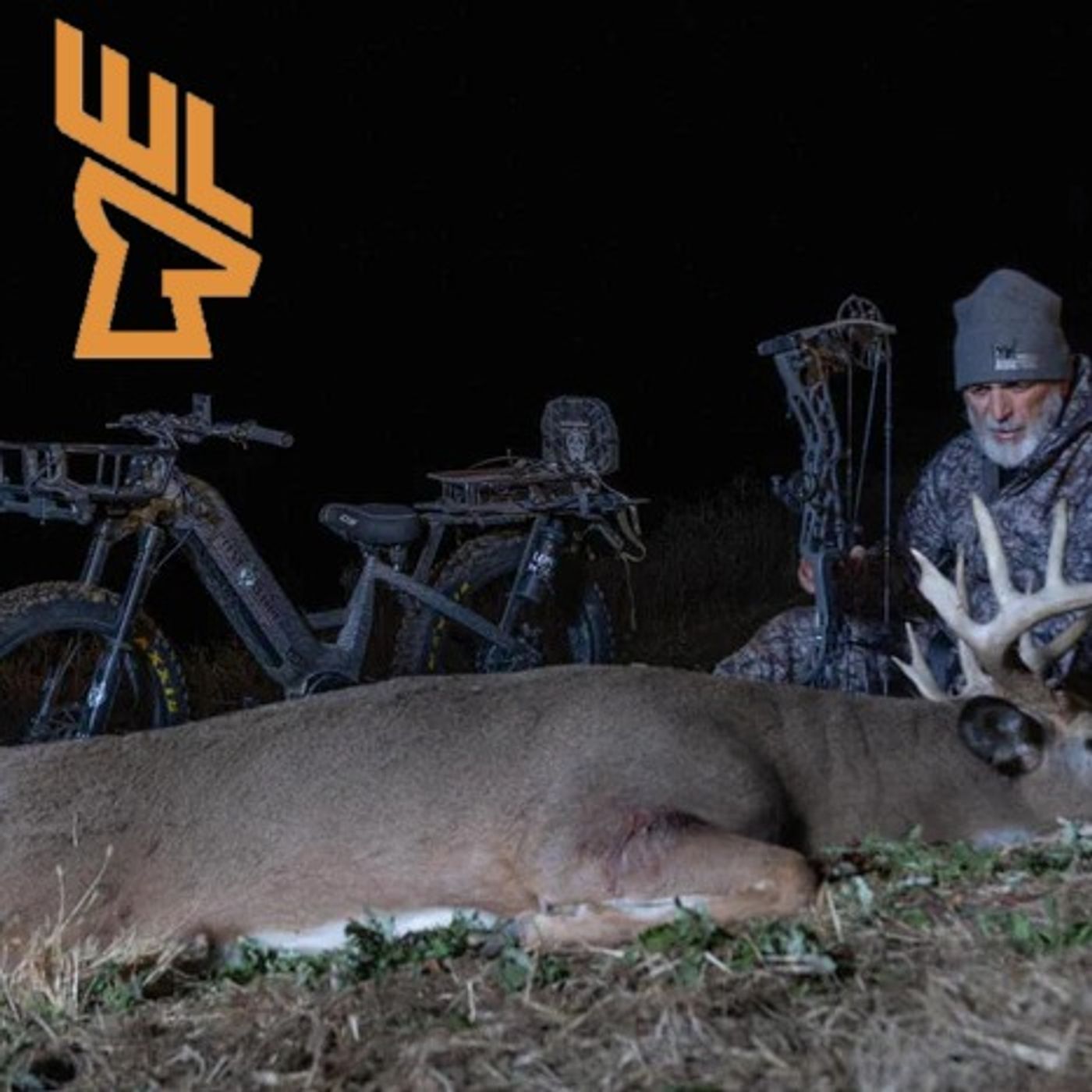
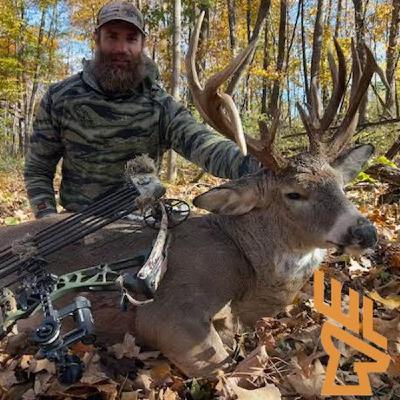
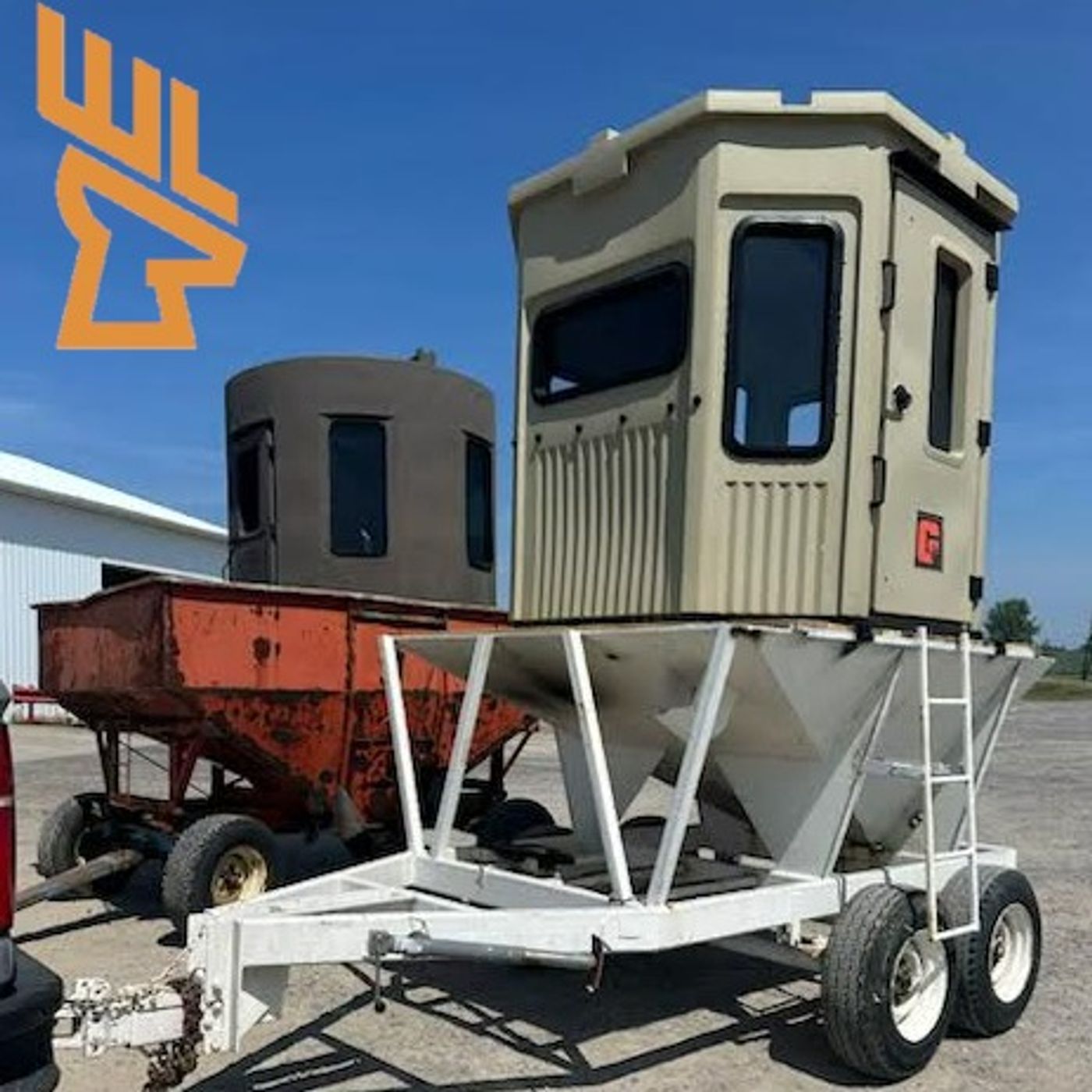


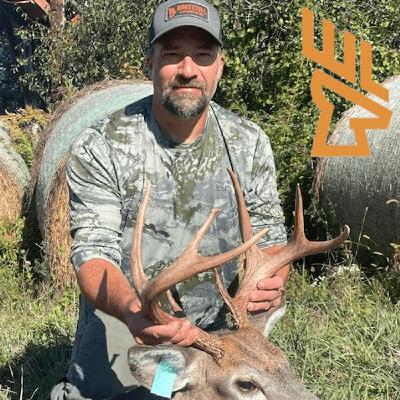


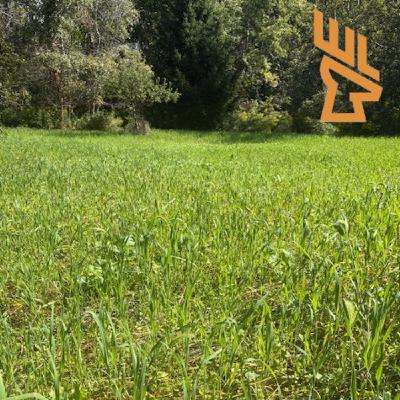
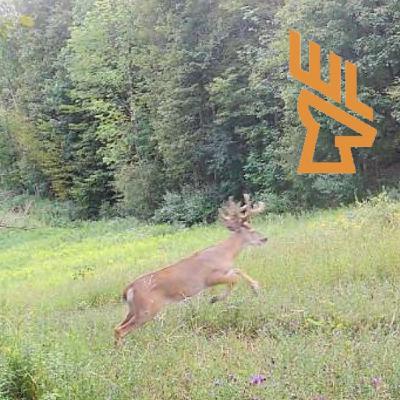
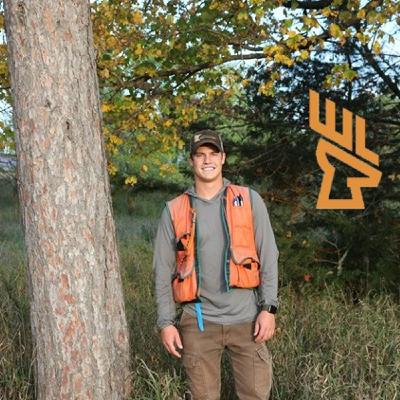
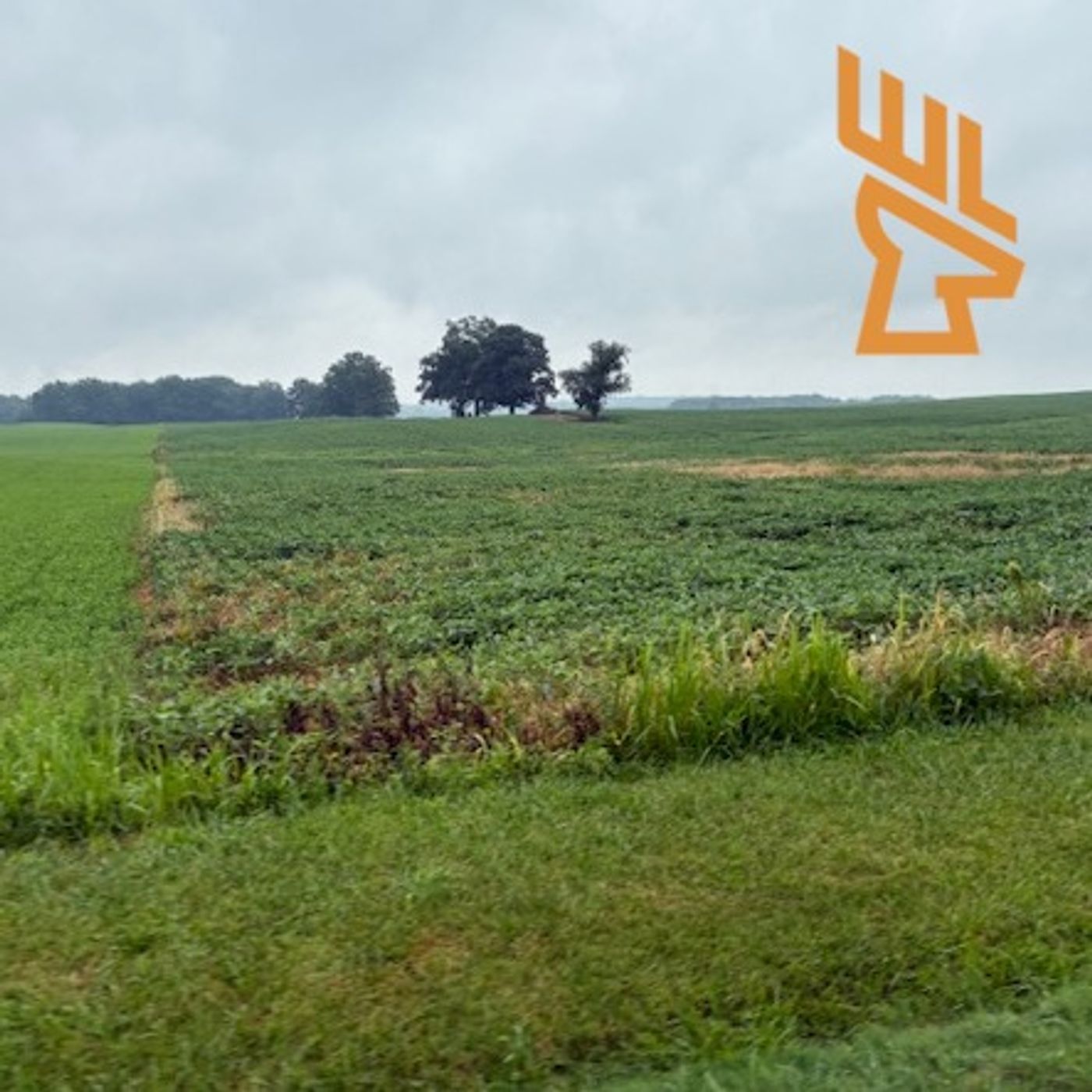
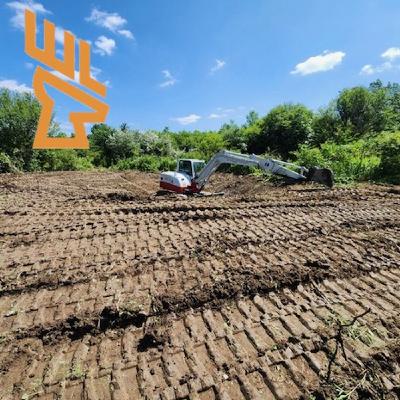
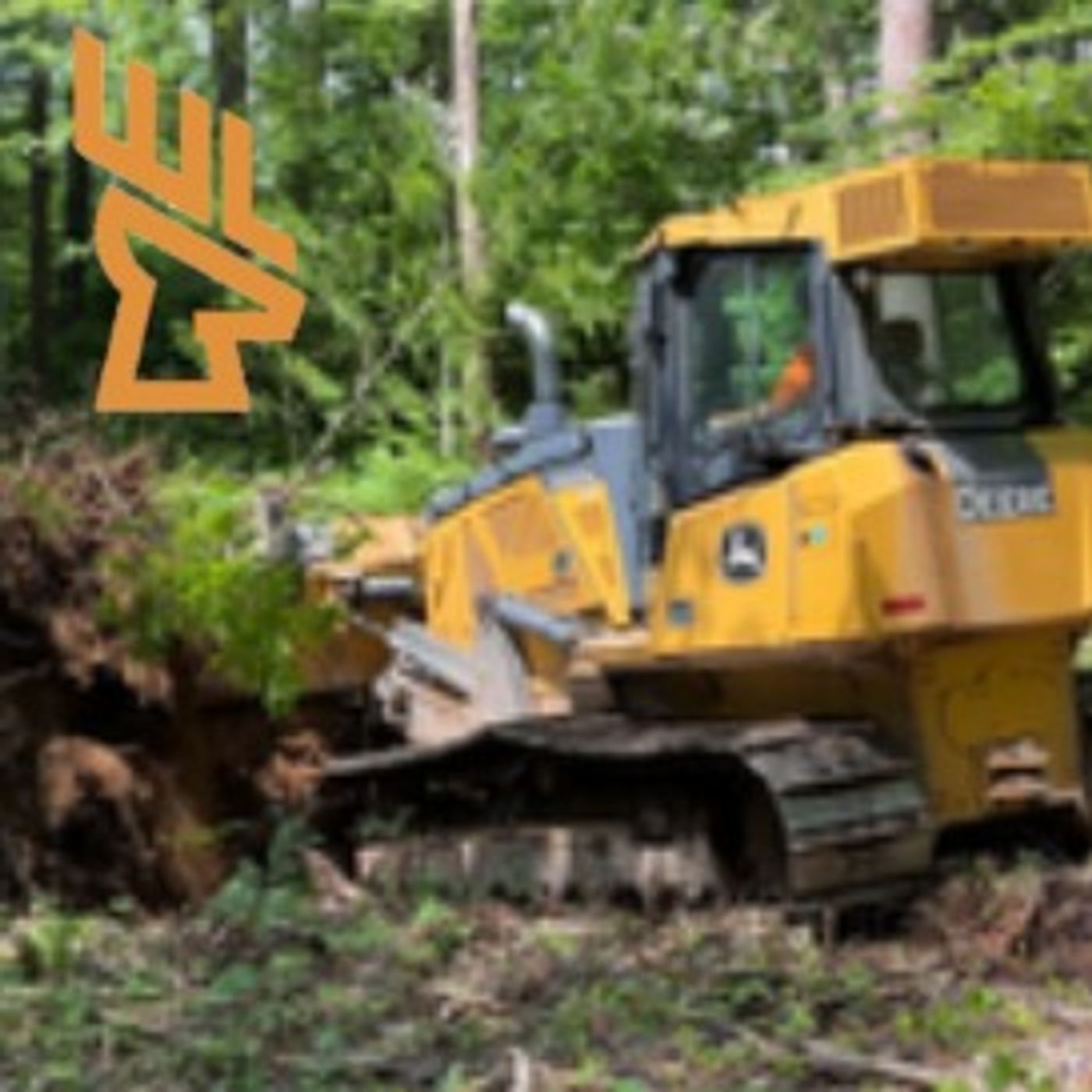
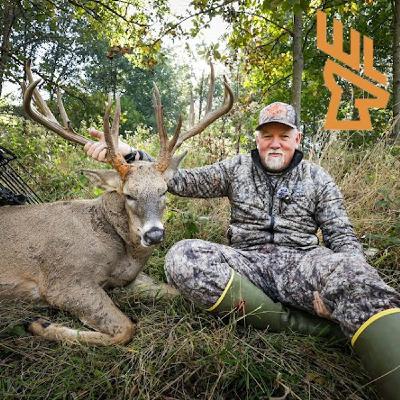
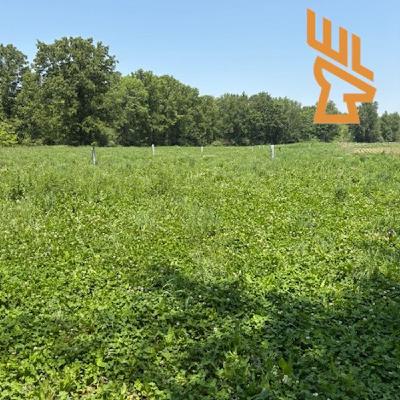
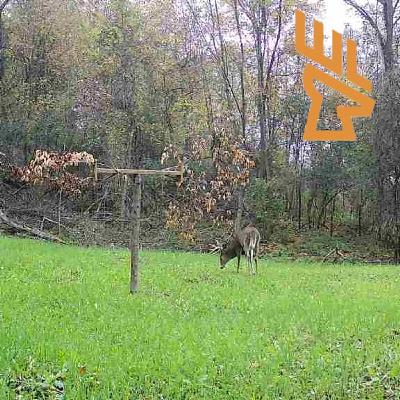
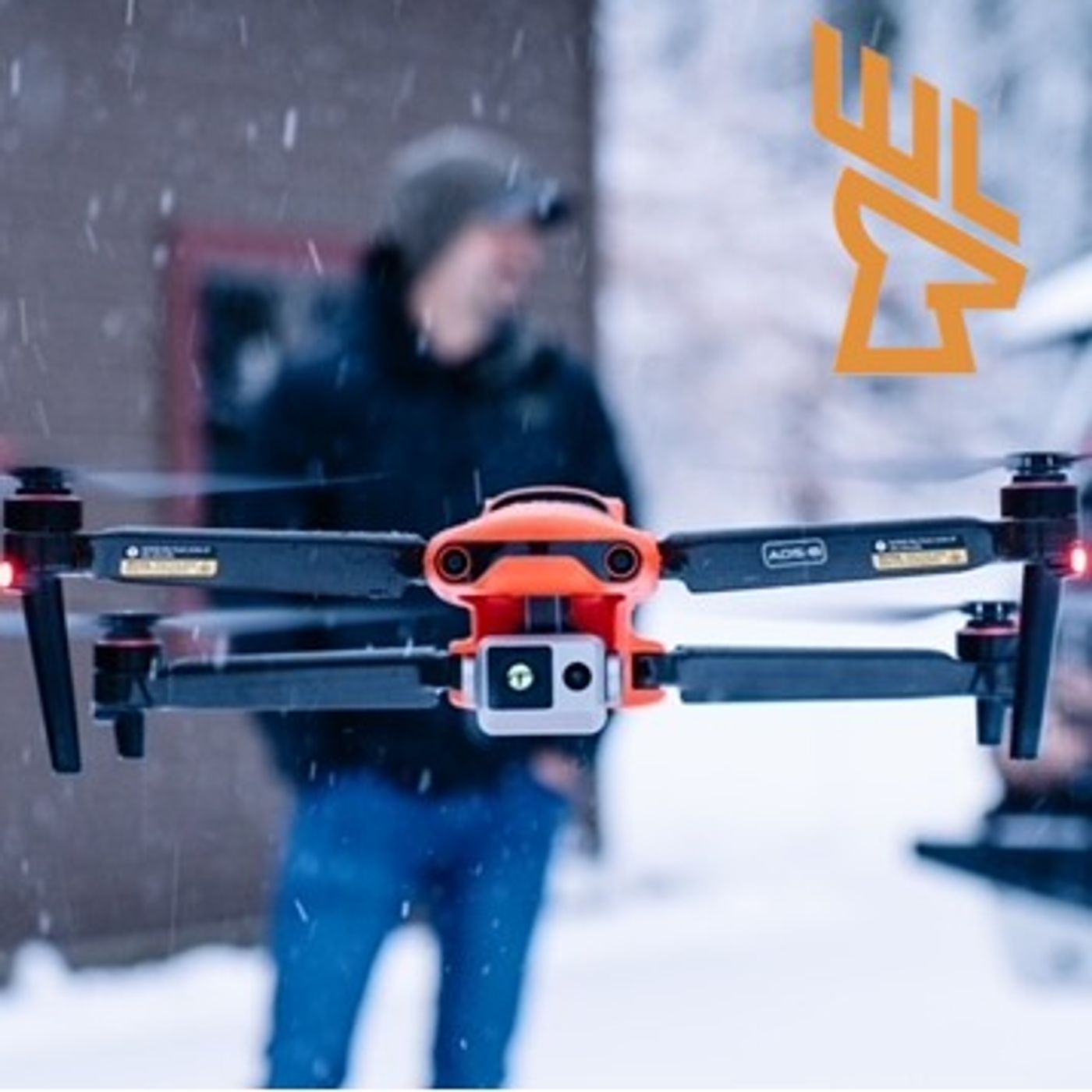



thank you for sharing, i have this site https://fontainecontractingltd.com/ can i use this for my site
nice to hear someone talking about new york.